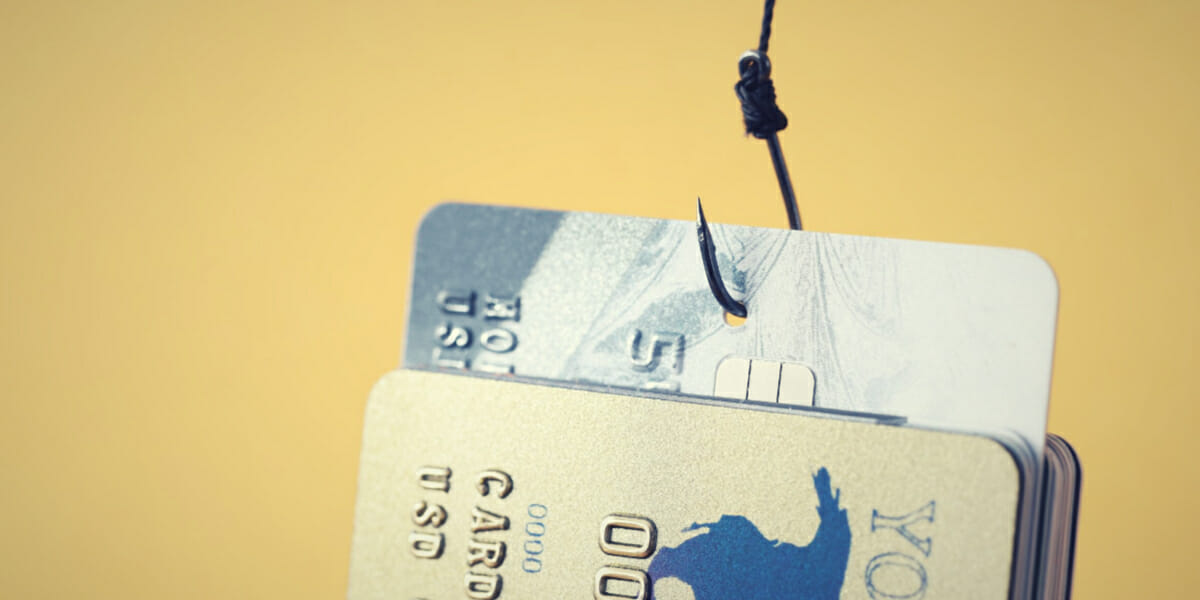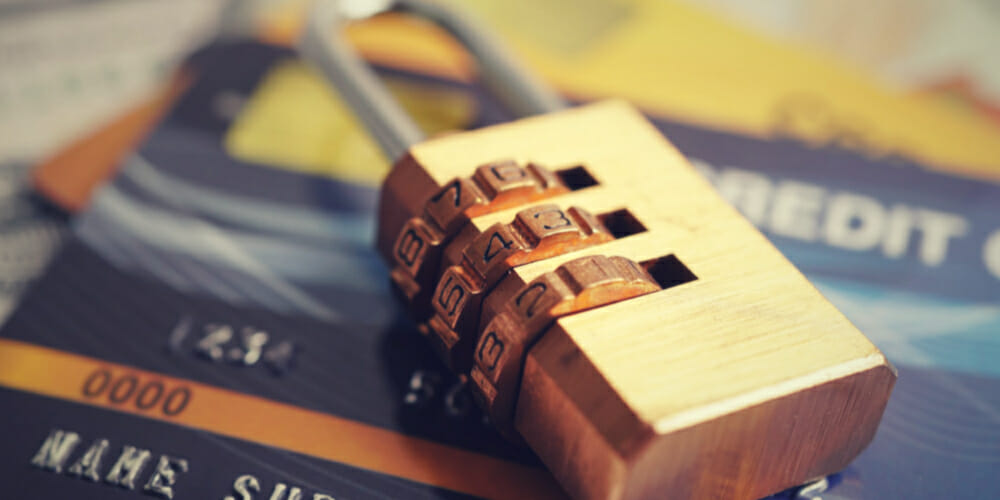You may have heard the term “swiping scamming” but you’re not sure what it means. Scammers are always looking for new ways to steal our hard-earned money. One of the latest scams is called “swiping.”
Swiping scamming is online fraud involving using stolen or fake credit card information to make unauthorized purchases. This can be done by creating a fake online account, using someone else’s card information, or using a stolen credit card. Swiping scamming can result in serious financial losses for the victim, as well as damage to their credit score.
If you’re not careful, swiping can leave you with a huge bill and a lot of headaches. Here’s what you need to know about swiping and how to protect yourself from this growing threat.
What is Swiping Scamming?
Swiping scamming is a type of fraud that involves using a stolen or fake credit card to make unauthorized charges. The scammers will often target victims who have recently made a purchase or have a high credit card balance. They will then use the victim’s information to make unauthorized charges to their account. This can result in the victim’s account being overdrawn and fees being charged. It can also involve using fake checks, money orders, or other financial instruments.
Swiping scamming is a serious problem that can have a lasting impact on your finances and your credit score. In some cases, scammers may even pose as legitimate businesses in order to obtain the victim’s credit card information. Swiping scams are becoming increasingly common and can be very difficult to spot.
If you suspect you may be a victim of a swiping scam, you can do a few things to protect yourself.
- Always check your credit card statements carefully for unauthorized charges. If you see any charges that you don’t recognize, call the credit card company immediately and dispute the charges.
- You should also be cautious about giving out your credit card information to anyone who calls or emails you asking for it. If someone contacts you asking for your credit card information, do not give it to them. Instead, hang up the phone or delete the email.
- If you think you may have been a victim of a swiping scam, contact your local police department and file a report.
Dangers of Swiping
It’s no secret that using a credit or debit card can be risky. After all, if your card is lost or stolen, someone could rack up a hefty bill in your name. But did you know that simply swiping your card can also put you at risk?
That’s right – every time you swipe your card, there’s a small chance that your information could be compromised. And while the odds of this happening are relatively low, it’s still important to be aware of the dangers of swiping your card.
So what exactly are the risks? Here are just a few:
Skimming
Skimming is a type of credit card fraud that involves illegally copying information from the magnetic stripe on a credit or debit card. This information can then be used to create a counterfeit card, which can be used to make unauthorized purchases.
Skimming is becoming increasingly common as criminals become more sophisticated in their methods. In some cases, skimmers are able to capture data from cards that are swiped through legitimate point-of-sale devices, such as ATM machines and gas pumps. In other cases, skimmers may place their own devices on these machines in order to capture card data.
Data Breaches
Data breaches are becoming more and more common, and they can affect your credit or debit card information if you swipe your card at a business that’s been breached. In a data breach, criminals gain access to a business’s customer database and can potentially steal credit or debit card numbers, expiration dates, and even security codes.
Card Not Present Fraud
Card Not Present Fraud (CNP) is a type of fraud that occurs when a thief obtains your credit or debit card number, expiration date, and security code. They can use this information to make online or phone purchases without your knowledge. CNP fraud can be costly and cause financial hardship, so it’s important to be aware of the risks and take steps to protect yourself.
There are several ways that thieves can obtain your card information. They may steal your physical credit or debit card, or they may access your account information online through a data breach. Once they have your information, they can make fraudulent purchases without your knowledge.
CNP fraud can be costly and cause financial hardship. If you are the victim of CNP fraud, you may be responsible for the charges made on your account. You may also have to deal with the inconvenience of having your card canceled and replaced. In some cases, CNP fraud can also lead to identity theft.
ID Theft
ID theft is a serious problem that can have a lasting impact on your finances and your credit. It occurs when someone uses your personal information, such as your name, Social Security number, or credit card number, without your permission to commit fraud or other crimes.
If you are a victim of ID theft, you may not know it right away. You may find out when you check your credit report or bank statement and see unauthorized charges. Or you may get calls from debt collectors for debts you do not owe. If your identity is stolen, it can take months or even years to recover and clear your name. In the meantime, you may lose out on job opportunities, be denied loans and housing, and even be arrested for crimes you did not commit.
Counterfeit Cards
Counterfeit cards are fake or unauthorized copies of genuine cards. They are often used to defraud businesses or individuals and can be very difficult to spot. Many counterfeiters use high-quality printers and materials to make their fake cards, so it can be tricky to tell the difference between a real and a fake card. Here are some things to look out for:
- The quality of the printing on the card may be poor
- The colors may be off
- The card may feel too thin or flimsy
- There may be misspellings or incorrect information on the card
- The magnetic stripe on the back of the card may not work properly
If you suspect that a card is counterfeit, you should contact the issuer immediately. They will be able to confirm whether the card is real or fake and will take appropriate actions if it is indeed counterfeit.
How to Identify Scamming Devices?
You should be on the lookout for devices that have been tampered with. To spot a skimming device, look for anything that looks out of place or doesn’t seem to fit properly. You should also avoid using ATMs in isolated or poorly lit areas.
Gas Stations
When you’re at the gas station, be on the lookout for devices that may be attached to the card reader. These devices can capture your card information and allow scammers to make unauthorized charges. If you see anything suspicious, do not use that particular reader and report it to the gas station attendant.
ATM
When using an ATM, be sure to cover your hand when entering your PIN. Scammers can place skimming devices on ATMs that capture this information. They may also place a camera nearby to record you as you enter your PIN. If you see anything suspicious, do not use the ATM and report it to the bank.
Places Where Swiping Scamming Commonly Happens
Non-Bank ATMs
Non-bank ATMs, such as those found in convenience stores or malls, are known hot spots for card skimming scams. These machines may not have the same level of security as bank-owned ATMs, and thieves can easily install skimming devices on them to steal card information.
Gas Stations
Gas stations also tend to be popular targets for scammers who use skimmers at the pump to steal credit and debit card information. These skimmers can be difficult to detect, so it’s important to always check for any unusual signs before inserting your card into a gas pump payment terminal.
Mobile Vendors
Mobile vendors, such as food trucks or street vendors, often use portable card readers to process payments from customers. However, these devices can also be easily tampered with to steal information from unsuspecting customers.
Restaurant
Restaurants can also be a common place for credit card skimming scams, particularly at self-serve kiosks or payment terminals at the table. Thieves can install skimmers on these devices and retrieve information from multiple unsuspecting diners before being detected. It’s important to always check for any unusual signs of tampering before using these types of payment options at restaurants.
Other Scams To Look Out For
There are many different types of scamming devices that criminals use to try and steal people’s money. Here are some of the most common ones:
ATM Skimmers
These devices are placed over the card slot of an ATM and capture people’s card details when they insert their cards into the machine. The stolen data can then be used to create a clone card, which can be used to withdraw cash from the victim’s bank account.
Skimming devices can be difficult to spot, as they are often very well camouflaged. However, there are some tell-tale signs that you can look out for, such as loose or damaged fittings on the machine or a raised or crooked card slot.
Phishing Emails
Phishing is a type of online scam where criminals send out mass emails that appear to be from a legitimate company or organization. The email will often contain a link that takes the recipient to a fake website, which is designed to look like the real thing.
The fake website will then prompt the user to input sensitive information, such as their login details or credit card number. This information is then collected by the criminal and can be used to steal the person’s identity or money.
Smishing Texts
Smishing is a type of phishing scam that uses text messages instead of emails. The scammer will send out mass texts that appear to be from a legitimate company or organization. The text will often contain a link that takes the recipient to a fake website, which is designed to steal their personal information.
Malware
Malware is a type of malicious software that is designed to infect computers and other devices. Once a device is infected with malware, the criminal can gain access to sensitive information stored on it, such as login details and credit card numbers. They can then use this information to commit identity theft or financial fraud.
Tips to Protect Yourself & Your Credit Card from Scams
- Only give out your credit card information to trusted sources. This means only providing it to businesses you know and trust and never giving it out over the phone or through emails unless you initiated the contact.
- Regularly check your credit card statement to ensure all charges are legitimate. Set up account notifications to alert you of certain transactions, such as international purchases or large purchases.
- Use strong passwords and change them often for online accounts linked to your credit card. Enable two-factor authentication whenever possible for added security.
- Avoid clicking on links or opening attachments from unknown senders, as they may contain malware that steals your information.
- Be cautious of too-good-to-be-true deals or offers, especially those that require immediate payment or ask for sensitive information. If in doubt, verify the legitimacy of the deal with the company directly.
- Keep your credit card physically secure by not carrying it with you unless necessary and keeping it safely stored when not in use.
- Monitor your credit regularly, as a sudden drop in your score could indicate fraudulent activity. Stay informed about current scams and alert authorities if you suspect any illegal activity involving your credit card.
- Be cautious of unexpected calls, emails, or texts requesting personal information. Legitimate companies will not contact you asking for sensitive information such as credit card numbers or social security numbers.
- Do not click on links in unsolicited emails, as they may lead to fraudulent websites designed to steal your information. If unsure about a request for information, contact the company directly using a trusted phone number or email address.
- Use credit cards with added security features. Look for credit or debit cards that offer fraud monitoring and alerts, as well as protection against unauthorized charges. Consider using a credit card with an embedded microchip, as this technology helps to prevent counterfeiting.
- Utilize virtual credit card numbers for online purchases, as these provide an extra layer of security by generating a unique account number for each transaction.
Things You Should Do If You Think You Got Scammed
Call Your Bank
If you think you have been scammed, call your bank immediately. They may be able to reverse the transaction or freeze any associated accounts. Be sure to report the scam to the authorities and take steps to protect yourself from future scams, such as changing passwords and monitoring credit reports. It’s important to act quickly in order to minimize the damage done by the scammer. Additionally, consider informing friends and family about the scam in case they may also be targeted.
Freeze Your Debit Card
To freeze your debit card, contact your bank or log into your online banking account. You may be asked to provide the reason for freezing the card. Once the request is made, the card will no longer be able to be used for purchases or withdrawals until it is unfrozen.
It is important to note that freezing your debit card will not stop automatic payments and recurring charges from going through. These may need to be canceled separately. Additionally, you will still be responsible for any transactions made before the freeze was put in place. Be sure to keep track of any outstanding payments or charges while your debit card is frozen.
Lock Your Account
Contact your bank to inform them that you want to lock your account. They may require you to fill out a form or make a formal request in writing. Next, change your account password and PIN number to something only you know. Additionally, set up any available security measures offered by the bank, such as two-factor authentication.
Regularly monitor your account activity and report any suspicious transactions immediately to your bank. This will help prevent unauthorized access to your funds. It is also important to remember to unlock your account when making any withdrawals or transactions yourself.
Monitor Bank and Card Statements
One way to monitor your bank and card statements is to regularly check them online or through the mobile app. Make sure to look for any unusual charges or payments. You can also set up transaction alerts, either through your bank or credit card companies, so that you will be notified of any suspicious activity.
It’s also important to carefully review your physical statements when they arrive in the mail. Look for any unexpected charges or unfamiliar transactions and report them to your bank immediately. Lastly, consider setting up transaction limits on your cards to prevent unauthorized use. This can help prevent fraudulent charges before they even occur.
- Log into your online banking account.
- Navigate to the account settings section and select the option to change authorization settings.
- You may be able to add or remove authorized users, set spending limits, and choose whether transactions require dual signatures.
- Be sure to carefully consider who you give access to and set appropriate limits to protect your finances.
- Once you have made the necessary changes, save them in the system and keep a record for yourself as well.
Two Factor Authentication
- To change your account authorization settings, go to the “Settings” page on your account.
- In the “Authorization” section, you can update your login credentials, connected devices, and 2-factor authentication preferences.
- Don’t forget to click “Save” after making any changes.
Additionally, always make sure to keep your authorization information secure and never share it with anyone else.
FAQs
What is the Punishment for Carding?
Carding, or the illegal use of someone else’s credit or debit card information, is considered a form of fraud. Punishment for this crime can vary depending on the severity and circumstances. In some cases, offenders may face misdemeanor charges and penalties such as probation and fines. More severe cases may be charged as felonies, leading to imprisonment and higher fines.
In the United States, a person found guilty of carding can be jailed for 15 years and fined $25,000. Additionally, those convicted of carding may be required to pay restitution to the victim(s) for any financial losses incurred.
How Often Do Credit Card Frauds Get Caught?
Despite credit card fraud being a major issue for both individuals and businesses, less than 1% of cases are actually solved by law enforcement. This low success rate can be attributed to a variety of factors, including the sophisticated methods used by criminals and the high volume of fraud cases reported each year.
Many credit card frauds go undetected until it is too late, as criminals are able to successfully disguise their activity and steal large sums of money without being caught. Even when fraud is reported and investigated, it can be difficult for law enforcement to track down the perpetrator and gather enough evidence for a successful prosecution.
Conclusion
Swiping scamming is when someone takes your credit or debit card and uses it without your permission. This can be done in a number of ways, such as by stealing your card, copying your card information, or taking pictures of your card.
The best way to protect yourself from swiping scamming is to use a credit or debit card with a chip. This will make it more difficult for someone to steal your information. You should also always keep track of where you put your cards and never leave them out in the open.













